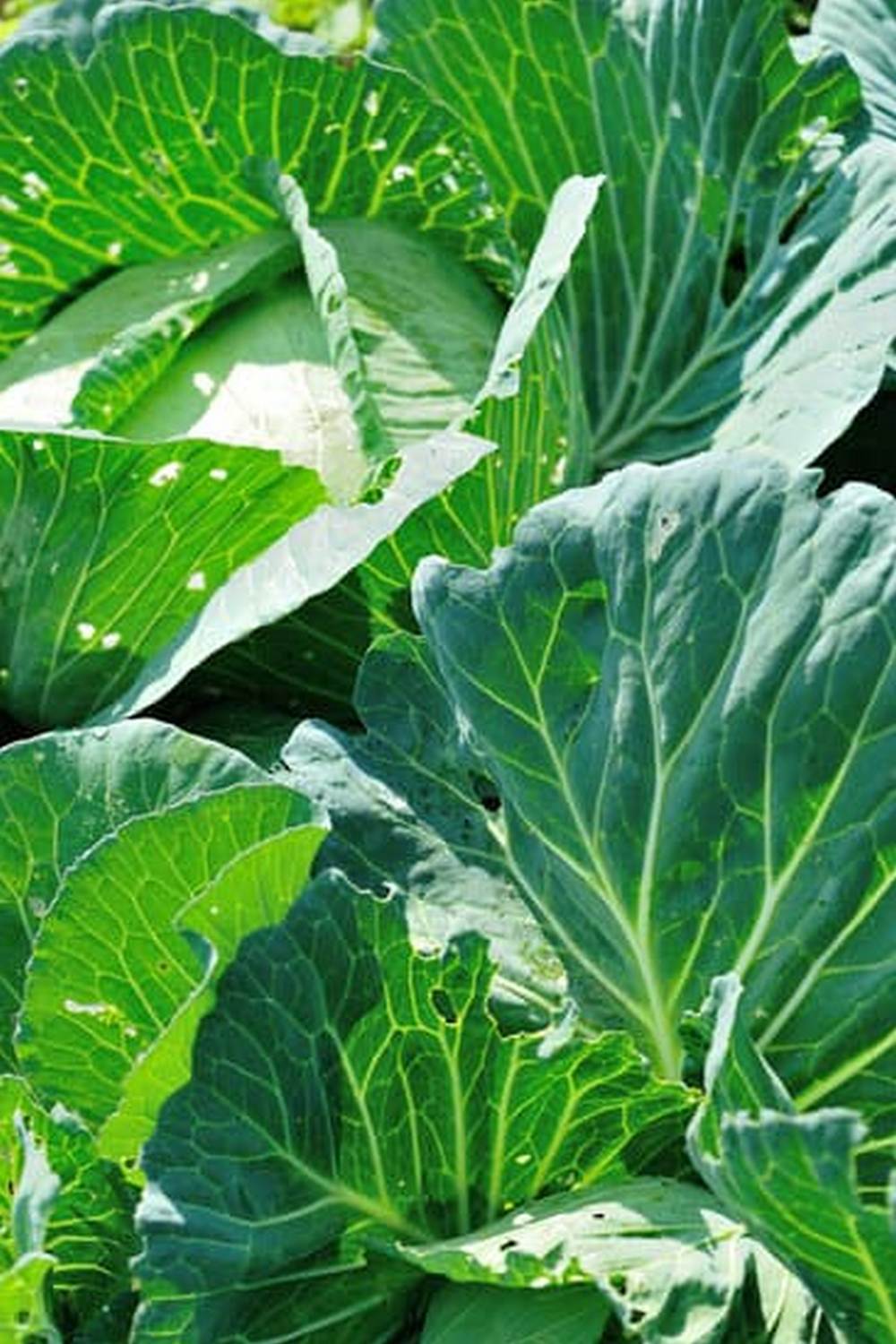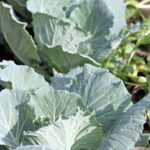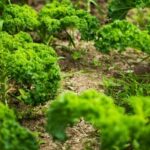Copper is a vital element in maintaining the health and productivity of vegetable gardens. Its presence is crucial for plants to thrive and produce top-quality vegetables. From providing essential nutrients to preventing diseases, copper plays a significant role in ensuring the success of your garden. In this article, we will explore why copper is important for vegetable gardens, its benefits, sources, deficiency symptoms, testing methods, application practices, potential risks, alternatives, and real-life examples of successful copper usage.
Vegetable gardens require various nutrients for proper growth and development, and copper is among the essential elements needed. Copper aids in photosynthesis and helps plants produce enzymes necessary for healthy growth. It enhances photosynthetic activity by aiding in the production of chlorophyll which gives plants their green color. Additionally, copper plays an instrumental role in root development and the metabolism of carbohydrates.
Furthermore, copper has robust antimicrobial properties that can protect vegetables from harmful pathogens. It acts as a natural fungicide and bactericide by disrupting cell membranes of disease-causing organisms. This means that using copper can help prevent diseases such as blight or wilt that could potentially devastate your entire garden if left unchecked.
In the next sections of this article, we will delve deeper into the benefits of copper in vegetable gardens as well as explore natural and synthetic sources of this nutrient. We will also discuss how to identify copper deficiency symptoms in plants and provide a step-by-step guide on testing copper levels in soil. By understanding the importance of copper, gardeners can adopt best practices for applying this element effectively while balancing potential risks associated with excessive intake.
Stay tuned to learn about organic alternatives to copper usage as well as insights from case studies showcasing successful implementation of this nutrient in various vegetable gardens. Whether you are an experienced gardener or just starting out with your own vegetable patch, understanding the importance of copper will undoubtedly contribute to healthier plants and bountiful harvests.
Benefits of Copper in Vegetable Gardens
Copper is an essential micronutrient for plant growth and development, and it plays a crucial role in vegetable gardens. This section will highlight the benefits of copper in vegetable gardens, focusing on its nutritional value.
Promotes Photosynthesis and Chlorophyll Production
One of the key benefits of copper in vegetable gardens is its involvement in photosynthesis and chlorophyll production. Copper is a cofactor for enzymes involved in these processes, such as plastocyanin. Plastocyanin facilitates electron transfer between different components of the photosynthetic machinery, enabling plants to convert sunlight into chemical energy. Additionally, copper is necessary for the synthesis of chlorophyll, the pigment responsible for capturing light energy during photosynthesis. Without sufficient copper levels, plants may experience stunted growth and reduced productivity.
Enhances Nutrient Uptake
Copper also plays a vital role in nutrient uptake by plants. It assists in the absorption and transportation of iron throughout the plant system, thus improving iron availability for various metabolic processes.
Adequate copper levels ensure that plants can absorb sufficient iron from the soil, preventing iron deficiency-induced chlorosis – a condition characterized by yellowing leaves due to insufficient chlorophyll production. In addition to facilitating iron uptake, copper also aids in phosphorus transportation within plants, contributing to healthy root development and overall growth.
Aids Enzymatic Reactions
Another benefit of copper in vegetable gardens is its participation in enzymatic reactions essential for plant growth. Copper acts as a cofactor for enzymes involved in many biochemical pathways, including lignin synthesis and cell wall formation. These enzymatic reactions are crucial for structural support within plants, as well as defense mechanisms against pests and diseases. Moreover, copper promotes antioxidant activity by supporting enzymes that neutralize harmful free radicals produced during various physiological processes.
Sources of Copper
Copper is an essential mineral for the growth and development of plants, including those in vegetable gardens. It plays a crucial role in various enzymatic reactions, photosynthesis, and overall plant health. While copper naturally occurs in soil, there are instances where supplemental copper may be necessary to ensure optimal plant growth. This section will explore the sources of copper available to gardeners, both natural and synthetic.
Natural sources of copper supplements include composts, manures, and organic materials rich in the mineral. These materials can be added to the soil as organic amendments to increase copper levels. For example, animal manure from cows or poultry often contains higher levels of copper due to their diet. Similarly, certain types of algae-based fertilizers contain significant amounts of copper.
On the other hand, synthetic copper supplements are specifically formulated products designed to provide a concentrated dose of copper to plants. These supplements typically come in liquid or powder form and are readily available at garden centers or online stores. Synthetic options allow gardeners to control and adjust the amount of copper they add to their soil more precisely.
Both natural and synthetic sources have their benefits and considerations. Natural sources provide a slow-release form of copper that is gradually released into the soil over time. They also contribute to overall soil health by enriching organic matter content and improving microbial activity. Synthetic supplements, on the other hand, can quickly address immediate deficiencies with targeted applications.
It is important for gardeners to understand their specific needs and consult with experts or conduct soil tests before choosing a source of copper supplementation for their vegetable gardens. In some cases, it may be necessary to combine natural sources with synthetic supplements to achieve optimal results.
Table: Examples of Natural and Synthetic Copper Supplements
| Natural Sources | Synthetic Supplements |
|---|---|
| Compost | Liquid copper fungicide |
| Manure (cows, poultry) | Copper sulfate |
| Algae-based fertilizers | Copper chelates |
Copper Deficiency Symptoms in Plants
Copper is an essential micronutrient for plants, playing a crucial role in various physiological processes. However, deficiency in copper can lead to detrimental effects on plant growth and development. It is important for gardeners to understand the signs and effects of copper deficiency in plants in order to address this issue effectively.
One of the most common symptoms of copper deficiency in plants is chlorosis, or yellowing of leaves. This occurs because copper is involved in the formation of chlorophyll, the pigment responsible for photosynthesis. Without sufficient levels of copper, plants are unable to produce chlorophyll properly, resulting in yellow or pale green leaves.
In addition to chlorosis, stunted growth and poor reproductive development are also common effects of copper deficiency. Copper is necessary for enzymatic reactions involved in cell division and cell elongation. Therefore, when plants do not receive adequate amounts of copper, their overall growth becomes compromised. This can be observed through shorter stems, smaller flowers or fruit, and reduced yield.
To identify whether your plants are suffering from copper deficiency, conducting a soil test is recommended. A soil test will measure the levels of copper present and provide insight into whether supplementation is necessary. Additionally, visual inspection of plant tissue can also help determine if there is a lack of copper. Leaves that appear twisted or distorted may indicate a deficiency.
If copper deficiency is confirmed, there are several ways to address this issue. One option is to amend the soil with natural sources of copper such as compost or manure rich in this micronutrient. Alternatively, synthetic copper supplements specifically designed for gardening are available on the market. Gardeners should carefully follow instructions regarding application rates as excessive use can lead to toxicity issues.
Understanding and addressing any signs of copper deficiency in plant growth is essential for maintaining healthy vegetable gardens. By identifying these symptoms early on and taking appropriate corrective measures, gardeners can ensure optimal growth and productivity for their plants.
How to Test Copper Levels in Soil
Why Testing Copper Levels in Soil is Important
Testing the copper levels in your soil is an essential step in maintaining a healthy vegetable garden. Copper is a necessary micronutrient for plants, but excessive amounts can be harmful. By testing copper levels regularly, gardeners can ensure that their plants are receiving the optimal amount of this important nutrient without risking toxicity. Testing copper levels in soil also allows gardeners to identify and address any deficiencies before they negatively affect plant growth and yield.
Step-by-Step Guide for Testing Copper Levels in Soil
- Collect samples: Start by collecting soil samples from different areas of your vegetable garden. Take care to avoid sampling near walkways, compost piles, or other areas where copper-based products may have been applied.
- Prepare samples: Once you have collected your samples, combine them all together in a clean container and mix thoroughly. Remove any rocks, roots, or debris from the sample.
- Choose a testing method: There are several methods available for testing copper levels in soil, including chemical test kits and laboratory analysis. Chemical test kits are often more convenient and provide rapid results, while laboratory analysis offers a more accurate assessment.
- Follow instructions: If using a chemical test kit, carefully follow the instructions provided with the kit. This typically involves adding soil and reagents to a test tube or vial and comparing the color change to a color chart for copper concentration estimation.
- Interpret results: Once you have completed the test according to the instructions, compare the color change with the corresponding values on the provided color chart or use any software/applications that come along with your kit. The chart should indicate whether your soil contains adequate copper levels or if it is deficient/excessive.
- Take necessary actions: Depending on the results of your soil test, take appropriate actions to adjust copper levels if needed. If there is a copper deficiency, consider applying a copper-based fertilizer or supplement. If excessive copper is detected, take steps to reduce copper intake by adjusting the use of copper-containing products.
Frequency of Testing Copper Levels
It is generally recommended to test soil for copper levels at least once every 1-2 years. However, it may be necessary to increase the frequency if you notice any signs of copper deficiency or excess in your plants. By regularly testing and monitoring copper levels in your soil, you can ensure that your vegetable garden maintains a healthy balance of this essential micronutrient for optimal plant growth and yield.
Best Practices for Applying Copper in Vegetable Gardens
When it comes to applying copper in vegetable gardens, there are certain best practices that gardeners should follow to ensure the proper and effective use of this essential nutrient. By following these dos and don’ts, gardeners can maximize the benefits of copper while minimizing any potential risks or negative effects.
Dos
1. Test soil pH: Before applying copper, it is important to test the soil pH. Copper is most readily available to plants when the soil pH falls between 5.5 and 6.5. If the soil pH is outside this range, it may be necessary to amend the soil before applying copper.
2. Follow recommended application rates: It is crucial to follow the recommended application rates for copper supplements as outlined on the product label. Applying too much copper can lead to toxicity in plants and harm beneficial organisms in the soil.
3. Apply at the right time: Copper is most effective when applied at specific times during a plant’s growth cycle. For preventative measures, it is best to apply copper early in the season before any disease symptoms appear. However, if a plant already shows signs of copper deficiency or disease, it may require multiple applications throughout the growing season.
Don’ts
1. Apply copper near water sources: Copper can be toxic to aquatic organisms, so it is important not to apply copper near water sources such as ponds or streams. This can contaminate nearby water bodies and pose a risk to aquatic life.
2. Mix copper with other fertilizers or pesticides: It is generally not recommended to mix copper-based products with other fertilizers or pesticides unless specifically directed on the product label. Mixing different chemicals together can result in unfavorable reactions and reduce their effectiveness.
3. Overapply copper: While copper is an essential nutrient for plants, overapplication can lead to toxicity and harm both plants and the environment. Always follow the recommended application rates and avoid excessive use of copper supplements.
By following these best practices, gardeners can ensure that copper is applied in a safe and effective manner in their vegetable gardens. This will help promote optimal plant growth, prevent copper deficiency, and minimize any negative impact on the environment.
Potential Risks and Side Effects of Excessive Copper
Excessive copper levels in vegetable gardens can have detrimental effects on both plants and the environment. While copper is an essential micronutrient for plant growth and development, it is important to maintain a balance to prevent toxicity. This section will explore the potential risks and side effects of excessive copper, as well as provide guidelines for gardeners to effectively manage copper intake.
When copper levels exceed the recommended limits in soil, plants may suffer from copper toxicity. Some common symptoms of copper toxicity include stunted growth, yellowing or bronzing of leaves, wilting, and even death in severe cases. Additionally, excessive copper in the soil can cause harm to beneficial microbes responsible for nutrient cycling and soil health. Moreover, the runoff containing excess copper can contaminate nearby water bodies, affecting aquatic organisms.
To prevent excessive accumulation of copper in vegetable gardens, gardeners must be mindful of their practices. Firstly, it is crucial not to over-apply copper-based fungicides or supplements. Aim for precise and targeted applications only when necessary to control specific diseases or deficiencies. It is also advisable to regularly test the soil’s copper levels using a reliable testing kit or by sending samples to a laboratory for analysis.
To ensure a balanced intake of copper in your vegetable garden, it is recommended to use organic amendments such as composts or manures rich in organic matter. These materials help improve overall soil health while providing plants with essential micronutrients like copper in a gentle manner. Additionally, incorporating diverse crop rotations and practicing good sanitation techniques can reduce the need for synthetic inputs that may contribute to excessive build-up of copper over time.
By being aware of the potential risks associated with excessive copper and following best practices for managing its intake, gardeners can strike a balance between utilizing this essential micronutrient and preventing harmful effects on their plants and the environment. It is essential to prioritize sustainable gardening practices that promote optimal plant health without compromising long-term soil fertility and ecosystem integrity.
Copper-Free Alternatives
For gardeners looking to avoid the use of copper in their vegetable gardens, there are several organic alternatives available that can still promote plant health. These alternatives not only help in maintaining the nutritional needs of plants but also contribute to a more sustainable and environmentally-friendly approach to gardening.
One effective alternative to copper is the use of compost or well-rotted manure. These natural materials improve soil fertility by introducing a wide range of beneficial organisms and nutrients. Compost helps retain moisture in the soil, enhances soil structure, and encourages healthy root development. By applying compost regularly, gardeners can provide plants with essential nutrients naturally without relying on synthetic supplements.
Another method for ensuring plant health without copper is through the use of organic fertilizers. Organic fertilizers derived from animal byproducts, such as bone meal or fish emulsion, are rich in essential minerals like nitrogen, phosphorus, and potassium. These nutrients promote strong vegetative growth, flower production, and overall plant vitality. Organic fertilizers are slow-release and gradually feed the plants over time, reducing the risk of nutrient imbalances or excesses.
Additionally, incorporating companion planting techniques can be an effective way to maintain plant health without the need for copper. Some plants have natural pest-repellent properties or attract beneficial insects that help control pests. For example, planting marigolds alongside vegetables can deter insects like aphids or nematodes that may harm crops. Similarly, interplanting herbs like basil or dill can attract pollinators and predator insects that prey on common garden pests.
By utilizing these organic methods in vegetable gardens instead of relying on copper-based treatments or supplements, gardeners can create a more sustainable growing environment while ensuring the health and productivity of their plants. These alternatives offer a natural approach to addressing common issues in gardening and promote a balance between plant nutrition and ecological stewardship.
Case Studies and Success Stories
Copper is an essential nutrient for plant growth and plays a crucial role in vegetable gardens. In this section, we will explore some case studies and success stories that highlight the effectiveness of copper usage in gardens.
One notable case study involves a vegetable garden in which the plants were suffering from stunted growth and yellowing leaves. Upon testing the soil, it was discovered that the garden had low copper levels. The gardeners decided to apply a copper supplement to the soil, following recommended dosage instructions. Within a few weeks, they observed significant improvements in plant health – the leaves became greener, the plants grew taller, and there was an overall increase in yield.
Another success story comes from a gardener who was struggling with fungal diseases on their tomato plants. Despite following good gardening practices and using organic pest control methods, the diseases continued to spread. After conducting research, they learned that copper has antifungal properties that can help combat these issues.
They decided to give it a try by applying a copper fungicide spray to their plants according to the package instructions. To their delight, they saw a noticeable reduction in fungal disease symptoms on their tomatoes.
These case studies demonstrate how copper can be highly effective in improving plant health and combating specific issues such as nutrient deficiencies or fungal diseases. It is important for gardeners to understand the specific needs of their plants and monitor them closely for any signs of deficiency or disease. By incorporating copper supplements when necessary and following proper application guidelines, gardeners can achieve healthier and more abundant crops.
| Case Study | Results |
|---|---|
| Stunted Growth and Yellow Leaves | Significant improvement in plant health; greener leaves, taller plants, increased yield. |
| Fungal Diseases on Tomato Plants | Reduction in fungal disease symptoms on tomatoes with noticeable improvement in plant health. |
Conclusion
In conclusion, copper plays a crucial role in the success of vegetable gardens. It provides numerous benefits, such as enhancing the nutritional value of crops and promoting overall plant health. By understanding the sources of copper, gardeners can choose between natural and synthetic supplements to ensure their plants receive adequate amounts of this essential nutrient.
It is important for gardeners to be aware of the symptoms of copper deficiency in plants, as this can greatly affect crop yield and quality. Testing soil for copper levels is a necessary step to determine if supplementation is needed. The step-by-step guide provided in this article can assist gardeners in accurately assessing copper levels and taking appropriate action.
When applying copper in vegetable gardens, there are certain dos and don’ts that should be followed. Overuse or improper application can result in excessive copper levels, which carries potential risks and side effects. It is crucial for gardeners to balance copper intake and consider using organic methods as alternatives whenever possible.
By exploring real-life case studies and success stories, gardeners can gain further insight into the usage and effectiveness of copper in vegetable gardens. These examples serve as inspiration for implementing best practices and optimizing crop health.
In summary, incorporating copper into vegetable gardens offers numerous benefits, such as improving nutrition and promoting plant growth. However, it is essential for gardeners to carefully manage copper levels to avoid potential risks. By following best practices, experimenting with organic alternatives, and being attentive to their plants’ needs, gardeners can create thriving vegetable gardens that reap the rewards of adequate copper supplementation.
Frequently Asked Questions
Is copper good for vegetable garden?
Copper can be beneficial for vegetable gardens under certain conditions. Copper is an essential micronutrient necessary for healthy plant growth, and it plays a vital role in various metabolic processes within plants.
However, while copper is essential, excessive amounts can be toxic to plants and soil organisms. Therefore, it’s crucial to maintain proper levels of copper in the soil to ensure the health and productivity of your vegetable garden.
How do I add copper to my garden?
There are several ways to add copper to your garden effectively. One common method is by using copper-based fungicides or pesticides specifically designed for agricultural use. These products often contain copper compounds that can help prevent or control fungal diseases or pests in your vegetable garden while providing a source of copper for your plants.
Additionally, you can consider incorporating organic matter, such as compost or manure, into the soil as they may naturally contain trace amounts of copper. Lastly, another option is selecting vegetable fertilizers that include copper as one of their components.
How do you add copper to soil naturally?
Adding copper to soil naturally involves relying on organic sources that naturally contain this micronutrient. One approach is through using organic amendments like compost or well-rotted manure that have been sourced from animals fed diets with adequate copper levels. These organic materials gradually release small amounts of copper into the soil as they decompose over time, helping maintain optimal levels for plant growth.
Furthermore, planting cover crops like legumes can enhance soil fertility since these plants form symbiotic relationships with beneficial bacteria that can mobilize and make copper more available for other crops in subsequent seasons. Another way is allowing fallen leaves or other plant debris rich in natural sources of copper to decompose on the garden beds over time, slowly contributing trace amounts of this micronutrient back into the soil ecosystem naturally

If you’re looking to get into vegetable gardening, or are just looking for some tips on how to make your current garden better, then you’ve come to the right place! My name is Ethel and I have been gardening for years. In this blog, I’m going to share with you some of my best tips on how to create a successful vegetable garden.





